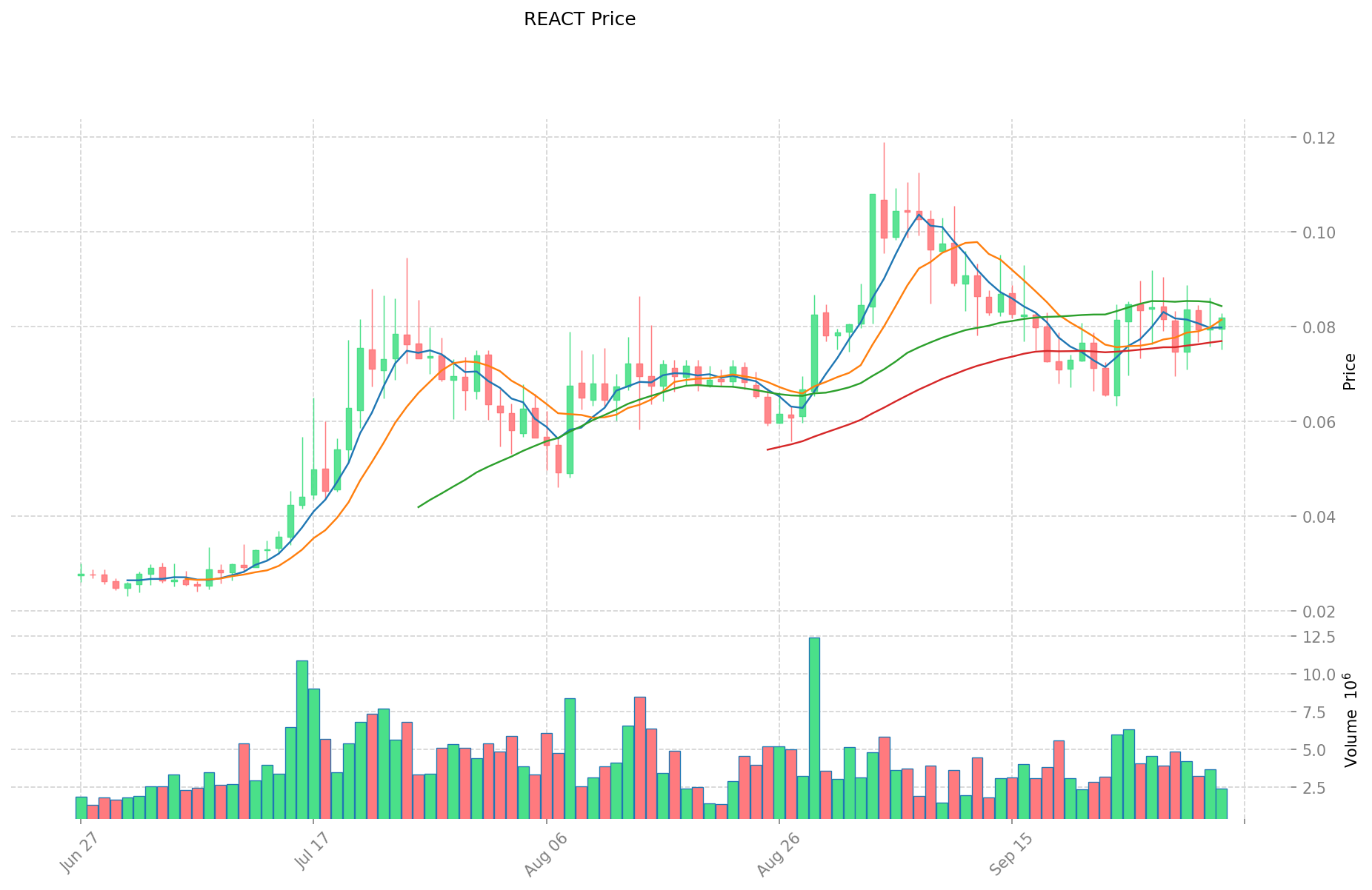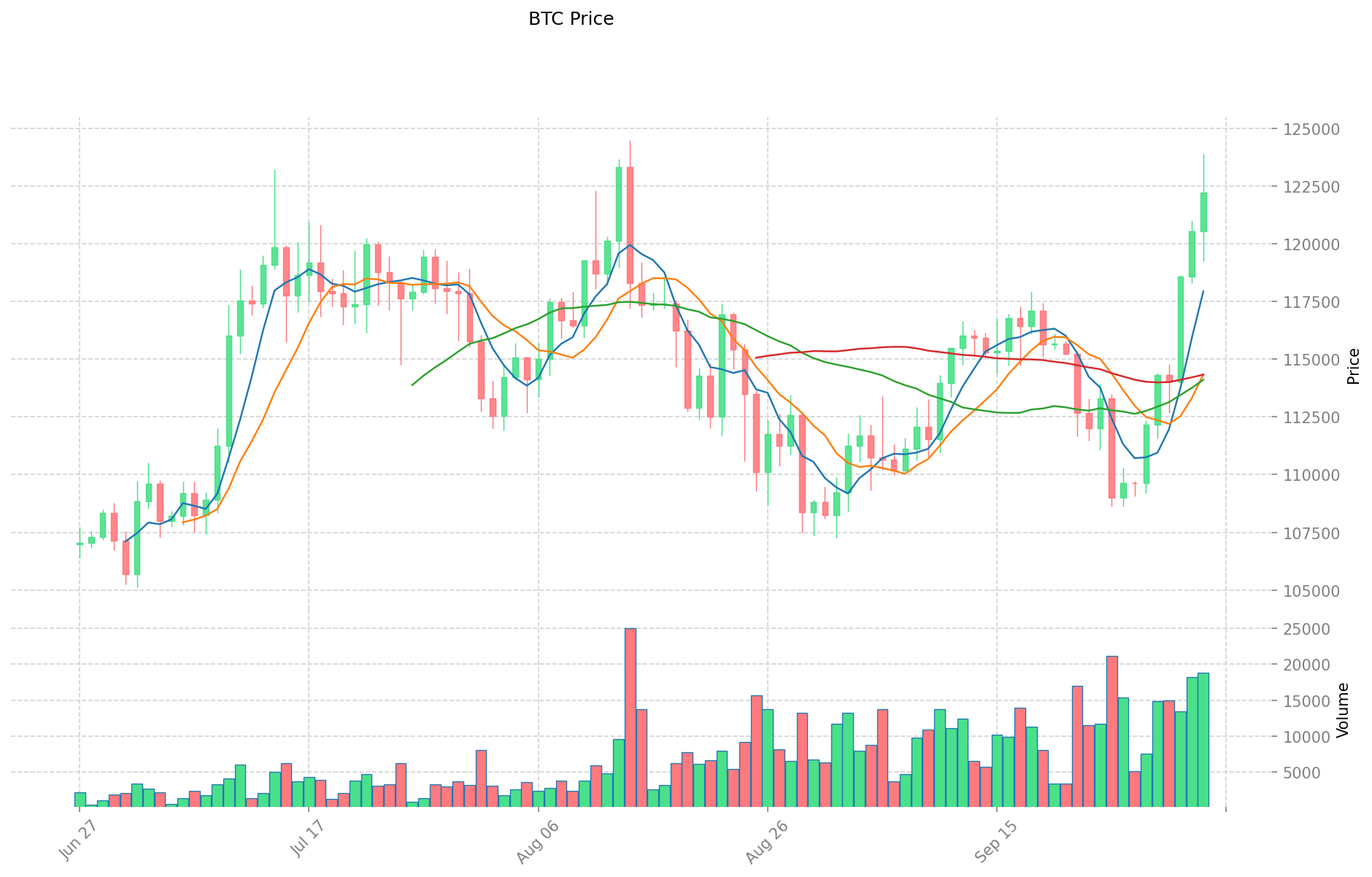REACT vs BTC: A Comprehensive Analysis of Investment Strategies in Technology and Cryptocurrency Markets
Introduction: Investment Comparison between REACT and BTC
In the cryptocurrency market, the comparison between Reactive Network vs Bitcoin has always been an unavoidable topic for investors. The two not only have significant differences in market cap ranking, application scenarios, and price performance, but also represent different crypto asset positioning.
Reactive Network (REACT): Since its launch, it has gained market recognition for its unique execution layer allowing developers to build and deploy revolutionary Reactive Smart Contracts.
Bitcoin (BTC): Since its inception in 2008, it has been hailed as "digital gold" and is one of the cryptocurrencies with the highest global trading volume and market capitalization.
This article will provide a comprehensive analysis of the investment value comparison between REACT vs BTC, focusing on historical price trends, supply mechanisms, institutional adoption, technological ecosystems, and future predictions, attempting to answer the question most concerning to investors:
"Which is the better buy right now?"
I. Price History Comparison and Current Market Status
REACT and BTC Historical Price Trends
- 2025: REACT launched and experienced price fluctuations due to market adoption.
- 2025: BTC reached an all-time high of $124,517 in August, influenced by institutional investment.
- Comparative analysis: In the current market cycle, REACT has dropped from its high of $0.2695 to a low of $0.0172, while BTC has shown more stability, maintaining a price above $100,000.
Current Market Situation (2025-10-04)
- REACT current price: $0.08121
- BTC current price: $122,200.1
- 24-hour trading volume: $186,458 (REACT) vs $2,282,195,684 (BTC)
- Market Sentiment Index (Fear & Greed Index): 64 (Greed)
Click to view real-time prices:
- View REACT current price Market Price
- View BTC current price Market Price


II. Core Factors Affecting REACT vs BTC Investment Value
Supply Mechanism Comparison (Tokenomics)
- REACT: Market sentiment plays a crucial role in price movement, especially when news of widespread adoption or major technological breakthroughs emerges
- BTC: Limited supply with halving mechanism; some perspectives suggest Bitcoin itself cannot create value
- 📌 Historical Pattern: Supply mechanisms drive price cyclicality, with market sentiment and regulatory clarity directly impacting investment confidence
Institutional Adoption and Market Applications
- Institutional Holdings: Some investors recommend allocating approximately 2% of their portfolio to Bitcoin
- Market Applications: REACT has machine learning-based price predictions to help users assess crypto market trends before investing
- Regulatory Policies: Clear and supportive regulatory policies enhance investor confidence in cryptocurrencies, promoting market growth and price appreciation, while ambiguous or overly strict regulations may hinder cryptocurrency development and devalue assets
Technical Development and Ecosystem Building
- REACT Technical Updates: REACT shows good investment potential according to some sources, with Reactive Network participating in industry events like TOKEN2049 Dubai
- BTC Technical Development: Bitcoin's core concepts include blockchain storage, decentralized consensus mechanisms, keys and scripts, transactions and UTXO
- Ecosystem Comparison: REACT offers investment assessment tools utilizing advanced machine learning for market trend evaluation
Macroeconomic and Market Cycles
- Performance in Inflationary Environments: Economic indicators significantly affect cryptocurrency valuations
- Macroeconomic Monetary Policies: Federal Reserve policies directly impact investor sentiment toward volatile assets like Bitcoin
- Geopolitical Factors: Trade wars and economic uncertainty cause investors to temporarily avoid volatile assets like Bitcoin, with large-scale selloffs and profit-taking activities by major investors affecting digital asset performance
III. 2025-2030 Price Predictions: REACT vs BTC
Short-term Forecast (2025)
- REACT: Conservative $0.067645 - $0.0815 | Optimistic $0.0815 - $0.100245
- BTC: Conservative $70,896.126 - $122,234.7 | Optimistic $122,234.7 - $160,127.457
Mid-term Forecast (2027)
- REACT may enter a growth phase, with prices expected to range from $0.076660041 to $0.13818981075
- BTC may enter a bullish market, with prices expected to range from $110,276.54041635 to $184,297.7798739
- Key drivers: Institutional capital inflow, ETF, ecosystem development
Long-term Forecast (2030)
- REACT: Base scenario $0.101132412495108 - $0.128015712019125 | Optimistic scenario $0.128015712019125 - $0.142097440341228
- BTC: Base scenario $131,611.9632437820672 - $205,643.69256840948 | Optimistic scenario $205,643.69256840948 - $273,506.1111159846084
Disclaimer: This forecast is for informational purposes only and should not be considered as financial advice. Cryptocurrency markets are highly volatile and unpredictable. Always conduct your own research before making any investment decisions.
REACT:
| 年份 | 预测最高价 | 预测平均价格 | 预测最低价 | 涨跌幅 |
|---|---|---|---|---|
| 2025 | 0.100245 | 0.0815 | 0.067645 | 0 |
| 2026 | 0.11086445 | 0.0908725 | 0.04907115 | 11 |
| 2027 | 0.13818981075 | 0.100868475 | 0.076660041 | 24 |
| 2028 | 0.12431030859 | 0.119529142875 | 0.0788892342975 | 47 |
| 2029 | 0.13411169830575 | 0.1219197257325 | 0.064617454638225 | 50 |
| 2030 | 0.142097440341228 | 0.128015712019125 | 0.101132412495108 | 57 |
BTC:
| 年份 | 预测最高价 | 预测平均价格 | 预测最低价 | 涨跌幅 |
|---|---|---|---|---|
| 2025 | 160127.457 | 122234.7 | 70896.126 | 0 |
| 2026 | 160946.42949 | 141181.0785 | 136945.646145 | 15 |
| 2027 | 184297.7798739 | 151063.753995 | 110276.54041635 | 23 |
| 2028 | 207924.150998718 | 167680.76693445 | 145882.2672329715 | 37 |
| 2029 | 223484.92617023496 | 187802.458966584 | 142729.86881460384 | 53 |
| 2030 | 273506.1111159846084 | 205643.69256840948 | 131611.9632437820672 | 68 |
IV. Investment Strategy Comparison: REACT vs BTC
Long-term vs Short-term Investment Strategies
- REACT: Suitable for investors focused on ecosystem potential and innovative technologies
- BTC: Suitable for investors seeking stability and inflation-hedge properties
Risk Management and Asset Allocation
- Conservative investors: REACT: 5% vs BTC: 15%
- Aggressive investors: REACT: 15% vs BTC: 30%
- Hedging tools: Stablecoin allocation, options, cross-currency portfolios
V. Potential Risk Comparison
Market Risks
- REACT: Higher volatility due to lower market cap and trading volume
- BTC: Susceptible to macroeconomic factors and institutional investor sentiment
Technical Risks
- REACT: Scalability, network stability
- BTC: Mining centralization, potential security vulnerabilities
Regulatory Risks
- Global regulatory policies may have different impacts on both assets
VI. Conclusion: Which Is the Better Buy?
📌 Investment Value Summary:
- REACT advantages: Innovative technology, potential for ecosystem growth
- BTC advantages: Market dominance, institutional adoption, proven track record
✅ Investment Advice:
- New investors: Consider a small allocation to BTC for exposure to the crypto market
- Experienced investors: Diversify between BTC and REACT based on risk tolerance
- Institutional investors: Focus on BTC for its liquidity and market acceptance
⚠️ Risk Warning: The cryptocurrency market is highly volatile. This article does not constitute investment advice. None
FAQ
Q1: What are the main differences between REACT and BTC in terms of investment value? A: REACT offers innovative technology and potential for ecosystem growth, while BTC provides market dominance, institutional adoption, and a proven track record. REACT is more suitable for investors focused on ecosystem potential, while BTC is better for those seeking stability and inflation-hedge properties.
Q2: How do the supply mechanisms of REACT and BTC compare? A: REACT's price is largely influenced by market sentiment, especially when news of widespread adoption or technological breakthroughs emerges. BTC has a limited supply with a halving mechanism, which drives price cyclicality. Some perspectives suggest Bitcoin itself cannot create value.
Q3: What are the price predictions for REACT and BTC by 2030? A: For REACT, the base scenario predicts a range of $0.101132412495108 - $0.128015712019125, with an optimistic scenario of $0.128015712019125 - $0.142097440341228. For BTC, the base scenario predicts a range of $131,611.9632437820672 - $205,643.69256840948, with an optimistic scenario of $205,643.69256840948 - $273,506.1111159846084.
Q4: How does institutional adoption differ between REACT and BTC? A: BTC has significant institutional adoption, with some investors recommending allocating approximately 2% of their portfolio to Bitcoin. REACT's institutional adoption is less established, but it offers machine learning-based price predictions to help users assess crypto market trends.
Q5: What are the main risks associated with investing in REACT and BTC? A: REACT faces higher volatility due to lower market cap and trading volume, as well as potential scalability and network stability issues. BTC is susceptible to macroeconomic factors, institutional investor sentiment, mining centralization, and potential security vulnerabilities. Both assets are subject to regulatory risks.
Q6: How should investors allocate their portfolios between REACT and BTC? A: Conservative investors might consider allocating 5% to REACT and 15% to BTC, while aggressive investors might allocate 15% to REACT and 30% to BTC. New investors should consider a small allocation to BTC for exposure to the crypto market, while experienced investors should diversify between BTC and REACT based on risk tolerance.
Q7: What factors drive the price cyclicality of cryptocurrencies like REACT and BTC? A: Supply mechanisms, market sentiment, regulatory clarity, institutional adoption, technological developments, and macroeconomic factors all play crucial roles in driving price cyclicality for cryptocurrencies like REACT and BTC.
Share
Content